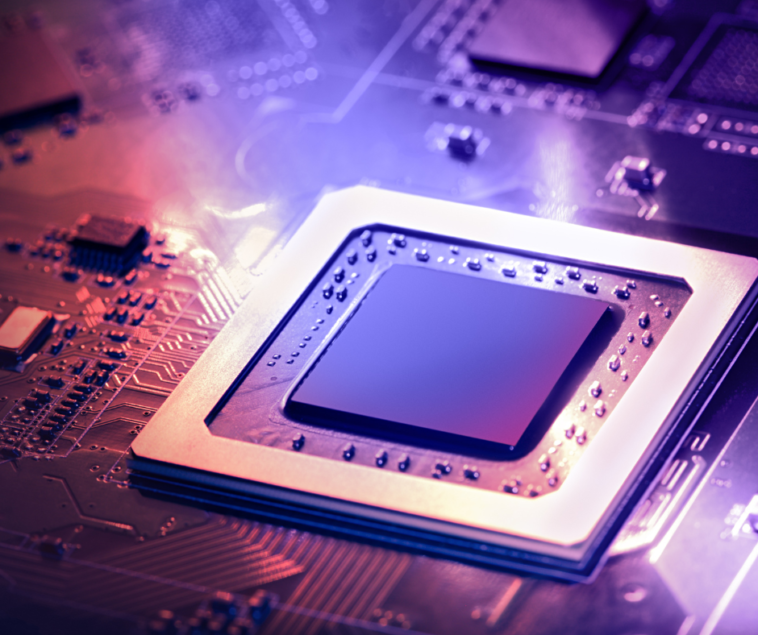The future of semiconductor distribution in India presents both opportunities and challenges. India has been rapidly expanding its semiconductor industry, driven by factors such as increasing demand for electronics, a growing middle class, and government initiatives like “Make in India” and “Digital India.” As a result, the distribution sector plays a crucial role in ensuring the availability and accessibility of semiconductors to support this growth.
Opportunities:
- Growing market: India’s consumer electronics market is witnessing significant growth, driven by factors such as increasing urbanization, rising disposable incomes, and expanding digital infrastructure. This growth creates opportunities for semiconductor distributors to cater to the demand for electronic devices.
- Manufacturing hub: The Indian government’s push for local manufacturing, coupled with initiatives like the production-linked incentive (PLI) scheme, aims to make India a global manufacturing hub for electronics. This initiative will require a robust semiconductor supply chain, including efficient distribution networks, to support the manufacturing ecosystem.
- Internet of Things (IoT) and Smart Cities: India’s focus on building smart cities and expanding IoT applications opens up avenues for semiconductor distributors. These technologies rely heavily on sensors, connectivity solutions, and other semiconductor components, creating opportunities for distributors to provide specialized solutions.
- E-commerce growth: India has witnessed significant growth in e-commerce, making it easier for semiconductor distributors to reach a broader customer base. Online platforms provide a convenient way to connect with customers, offer a wide range of products, and streamline the distribution process.
Challenges:
- Infrastructure limitations: India faces infrastructure challenges, including inadequate logistics, transportation, and warehousing facilities. These shortcomings can hinder efficient distribution, leading to delays and increased costs. Addressing these infrastructure gaps is crucial for the smooth functioning of semiconductor distribution.
- Supply chain complexities: The semiconductor supply chain is complex, involving multiple stakeholders, long lead times, and global dependencies. Managing this complexity, ensuring a stable supply of components, and mitigating risks related to global supply chain disruptions pose challenges for distributors.
- Counterfeit products: The semiconductor industry is vulnerable to counterfeit products, which can have severe implications for the reliability and performance of electronic devices. Distributors need to implement robust quality control measures and collaborate closely with authorized suppliers to mitigate the risk of counterfeit components entering the market.
- Technical expertise: Semiconductor products are highly specialized, and distributors need to possess technical expertise to understand customer requirements, provide appropriate solutions, and offer value-added services. Building a skilled workforce capable of providing technical support can be a challenge.
- Competition and pricing pressures: The semiconductor distribution market in India is competitive, with both domestic and international players vying for market share. Price pressures and thin profit margins can pose challenges for distributors, necessitating strategies to differentiate themselves through value-added services and strong customer relationships.
To harness the opportunities and overcome the challenges, semiconductor distributors in India should focus on building robust infrastructure, strengthening supply chain capabilities, investing in technical expertise, forging partnerships with authorized suppliers, and leveraging digital platforms for efficient operations. Additionally, collaboration with industry associations, government bodies, and educational institutions can help address challenges collectively and foster a conducive ecosystem for semiconductor distribution in India.
Insider’s Guide to Semiconductor Distributors in India: Key Players and Market Dynamics
Certainly! Here’s an insider’s guide to semiconductor distributors in India, including key players and market dynamics:
Key Players:
- Arrow Electronics: Arrow Electronics is a global distributor with a strong presence in India. They offer a wide range of semiconductor products, including integrated circuits (ICs), passive components, and electromechanical components. Arrow Electronics has a robust supply chain network and provides value-added services such as design support and logistics solutions.
- Avnet India: Avnet is another prominent global distributor operating in the Indian market. They offer a comprehensive portfolio of semiconductor products, including analog and digital ICs, microcontrollers, memory devices, and sensors. Avnet India focuses on providing technical expertise, supply chain optimization, and design services to customers.
- Future Electronics: Future Electronics is a leading distributor known for its broad semiconductor product portfolio. They offer products from various manufacturers and specialize in providing supply chain solutions, design support, and engineering services. Future Electronics has a strong presence in key Indian cities and caters to diverse industry sectors.
- WPG Holdings: WPG Holdings is one of the largest semiconductor distributors globally and has a significant presence in India. They offer a comprehensive range of semiconductor products, including memory devices, microcontrollers, sensors, and passive components. WPG Holdings focuses on providing value-added services, supply chain management solutions, and technical support.
- Rabyte Electronics: Rabyte Electronics is an Indian distributor catering to the semiconductor and electronics industry. They offer a wide range of semiconductor components, including ICs, transistors, diodes, and connectors. Rabyte Electronics focuses on providing efficient sourcing, inventory management, and logistics solutions to customers.
Market Dynamics:
- Competitive Landscape: The semiconductor distribution market in India is highly competitive, with both global and domestic players vying for market share. Key distributors compete based on factors such as product portfolio, supply chain capabilities, value-added services, and customer relationships.
- Supply Chain Dynamics: The semiconductor supply chain in India is complex, with long lead times and global dependencies. Distributors play a crucial role in managing the supply chain, ensuring a stable supply of components, and mitigating risks associated with global supply chain disruptions.
- Demand Drivers: Various factors are driving the demand for semiconductors in India, including increasing consumer electronics adoption, expanding digital infrastructure, growing IoT applications, and government initiatives promoting local manufacturing. Distributors need to align their strategies with these demand drivers to seize opportunities.
- Value-Added Services: To differentiate themselves, semiconductor distributors in India are increasingly offering value-added services such as design support, technical training, customization, and supply chain optimization. These services help customers streamline their product development and enhance their time-to-market.
- E-commerce Platforms: E-commerce platforms have gained prominence in the semiconductor distribution landscape in India. Many distributors have established online portals or partnered with e-commerce platforms to provide customers with easy access to a wide range of semiconductor products and streamline the procurement process.
- Collaboration and Partnerships: Distributors often collaborate with semiconductor manufacturers, authorized suppliers, and industry associations to strengthen their product offerings, enhance technical expertise, and mitigate risks associated with counterfeit products and supply chain disruptions.
Understanding the key players and market dynamics is crucial for semiconductor manufacturers, suppliers, and customers seeking reliable distribution channels in India. It allows them to make informed decisions, establish partnerships, and leverage the expertise and services offered by distributors to meet their business requirements effectively.
This post was created with our nice and easy submission form. Create your post!



Comments
0 comments